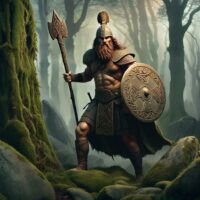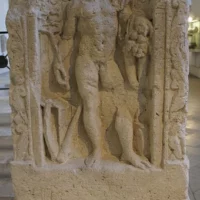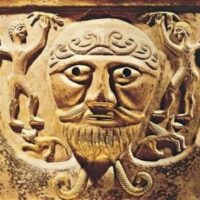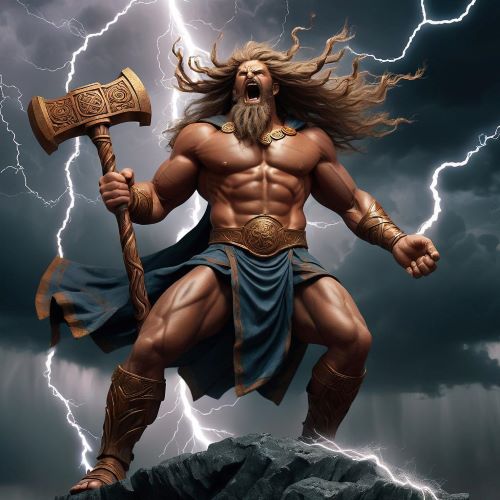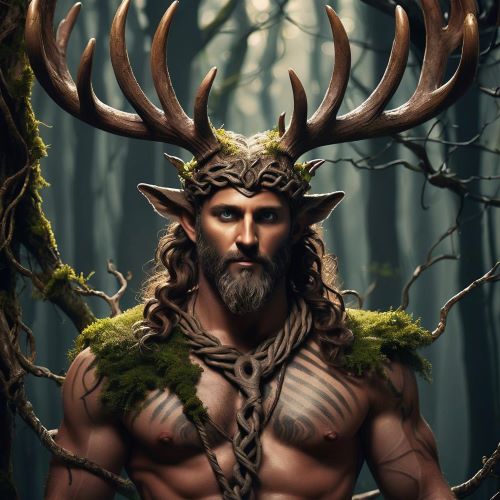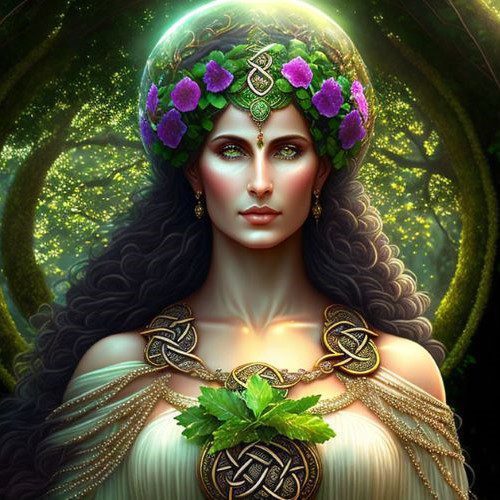Toutatis : The Protector God
Listen
At a glance
| Description | |
|---|---|
| Origin | Gaulish Mythology |
| Classification | Gods |
| Family Members | N/A |
| Region | France, Belgium, Switzerland, Germany, Italy |
| Associated With | Protection, War, Defence |
Toutatis
Introduction
Toutatis, also known as Teutates, was a major deity in ancient Gaul and Britain, revered as a protector of tribes. His name, derived from the Proto-Celtic “teutā” meaning “tribe,” reflects his role in safeguarding communal identity and well-being. Though his exact depiction remains unknown due to the absence of visual representations, historical texts and inscriptions highlight his significance.
As a central figure in Celtic society, Toutatis influenced religious practices and social structures. He was closely linked to ritual sacrifices, reinforcing his role in strengthening tribal unity. Roman writers, particularly Lucan in Pharsalia, associated him with Mercury and Mars, illustrating the cultural blending that occurred through Roman syncretism.
Due to the oral nature of Gaulish traditions, few direct myths about Toutatis survive. Most of what is known comes from Roman accounts, which often reinterpret Celtic deities through their own pantheon. Despite this, archaeological discoveries confirm his widespread veneration across Gaul. More than just a war god, Toutatis embodied protection, strength, and the collective spirit of the Gaulish tribes, serving as a unifying force in their fragmented but deeply interconnected world.
Physical Traits
Toutatis remains an elusive figure due to the lack of surviving Gaulish depictions, but historical records and artistic interpretations offer clues about how he may have been envisioned. Given his role as a war god and protector, he was likely imagined as a powerful warrior, embodying strength and tribal pride. Celtic sculptures often portrayed deities as imposing figures to emphasize their divine status, and Toutatis would have fit this pattern.
Modern artistic interpretations depict him armed with a spear or sword, standing alongside symbols of defense like shields or war standards. While these are speculative, they align with his known attributes as a guardian deity. Descriptions of the Gauls themselves—tall, strong, and often with reddish hair—may provide indirect hints about how their gods were perceived, further reinforcing the image of Toutatis as a formidable and commanding presence.
Family
Gaulish mythology emphasized the roles and functions of deities rather than detailed family structures, unlike Greek or Roman traditions. As a result, Toutatis has no known lineage in surviving texts. However, Celtic deities were often interconnected, suggesting he may have been linked to other warrior and guardian figures.
Some scholars speculate that Toutatis formed part of a divine triad alongside Esus, associated with sacrifice, and Taranis, a thunder god, based on references in Pharsalia by Lucan. Whether this reflects an actual religious belief or poetic interpretation remains uncertain. Comparisons have also been drawn between Toutatis and the Irish god Dagda, another tribal protector. Regardless of familial ties, Toutatis’ significance lay in his role as a unifying force, emphasizing the well-being of the tribe over individual relationships.
Other names
Toutatis, also spelled Teutates, had several name variations, including Totatis and Tutatis, reflecting regional differences in pronunciation and worship. The related term Toutiorix, meaning “king of the tribe,” suggests that his name may have been more of a title than a singular identity, reinforcing his role as a unifying tribal protector.
The Romans linked him to multiple gods, including Mars for his warrior aspect, Mercury for his guidance, Jupiter for his authority, and Apollo for his perceived wisdom. These associations, noted by writers like Lucan, highlight his diverse attributes and the adaptability of Celtic deities to Roman religious frameworks. Rather than being confined to a single role, Toutatis likely embodied different qualities depending on the needs of the tribes that revered him.
Powers and Abilities
Toutatis was chiefly revered as a guardian of the tribe, embodying strength, unity, and protection. He was invoked for success in battle, reinforcing his role as a war god, but his influence extended beyond warfare. His connection to Mercury suggests he may have also been linked to trade, communication, and guidance, while some accounts hint at an association with rivers, emphasizing his ties to the land and natural resources.
Beyond military strength, Toutatis was believed to ensure the prosperity and stability of his people. Rituals and sacrifices were performed in his honor, reflecting a belief in his power to shape the tribe’s fortunes. Roman sources, particularly Lucan’s Pharsalia, mention him as one of three major deities worshipped by the Gauls, alongside Esus and Taranis, each representing different aspects of life and death.
Some scholars propose that Toutatis also played a role in justice and governance, guiding leaders and maintaining social order. This aligns with the broader nature of Celtic deities, who often embodied multiple, interconnected domains. Whether as a war god, a protector, or a stabilizing force, Toutatis was deeply woven into the fabric of Gaulish society.
Modern Day Influence
Toutatis has seen a resurgence in modern times, largely through popular culture and scholarly interest. One of the most recognizable references comes from the Asterix comic series, where characters frequently exclaim, “By Toutatis!” This playful nod has introduced the deity to a global audience, keeping his name alive in contemporary discourse.
Beyond entertainment, modern Pagan and Druidic communities have embraced Toutatis as a symbol of tribal unity and protection. His association with strength and guardianship makes him an appealing figure for those seeking to reconnect with Celtic heritage. Additionally, archaeological discoveries—such as inscriptions bearing his name—continue to shed light on his role in ancient Gaulish society, reinforcing his historical significance.
Toutatis also appears in literature, games, and academic studies exploring Celtic mythology, further cementing his presence in modern thought. Though his worship declined with the Roman conquest and the spread of Christianity, his legacy endures as a representation of cultural identity and the enduring spirit of the Celtic people.
Related Images
Source
Webster, Jane (1995). “Interpretatio: Roman Word Power and the Celtic Gods”. Britannia. 26: 153–161.
Wissowa, Georg (1916–1919). “Interpretatio Romana: Römische Götter im Barbarenlande”. Archiv für Religionswissenschaft. 19: 1–49.
Zeidler, Jürgen (2007). “Review: Maier, Bernhard: Die Religion der Kelten”. Zeitschrift für celtische Philologie. 55 (1): 208–230.
https://atlanticreligion.com/tag/toutatis/
https://emrysydewin.substack.com/p/toutatis-a-god-of-warfare
https://en.wikipedia.org/wiki/Celtic_deities
https://infogalactic.com/info/Toutatis
https://mythus.fandom.com/wiki/Toutatis
https://powerlisting.fandom.com/wiki/Archetype:Celtic_Deity
https://sacred-texts.com/neu/celt/rac/rac06.htm
https://www.ancient-mythology.com/celtic/gaulish/toutatis.php
https://www.britannica.com/topic/Teutates
15 Ancient Celtic Gods and Goddesses You Should Know About
Frequently Asked Questions
What is lorem Ipsum?
I am text block. Click edit button to change this text. Lorem ipsum dolor sit amet, consectetur adipiscing elit. Ut elit tellus, luctus nec ullamcorper mattis, pulvinar dapibus leo.
What is lorem Ipsum?
I am text block. Click edit button to change this text. Lorem ipsum dolor sit amet, consectetur adipiscing elit. Ut elit tellus, luctus nec ullamcorper mattis, pulvinar dapibus leo.
What is lorem Ipsum?
I am text block. Click edit button to change this text. Lorem ipsum dolor sit amet, consectetur adipiscing elit. Ut elit tellus, luctus nec ullamcorper mattis, pulvinar dapibus leo.
What is lorem Ipsum?
I am text block. Click edit button to change this text. Lorem ipsum dolor sit amet, consectetur adipiscing elit. Ut elit tellus, luctus nec ullamcorper mattis, pulvinar dapibus leo.
What is lorem Ipsum?
I am text block. Click edit button to change this text. Lorem ipsum dolor sit amet, consectetur adipiscing elit. Ut elit tellus, luctus nec ullamcorper mattis, pulvinar dapibus leo.

